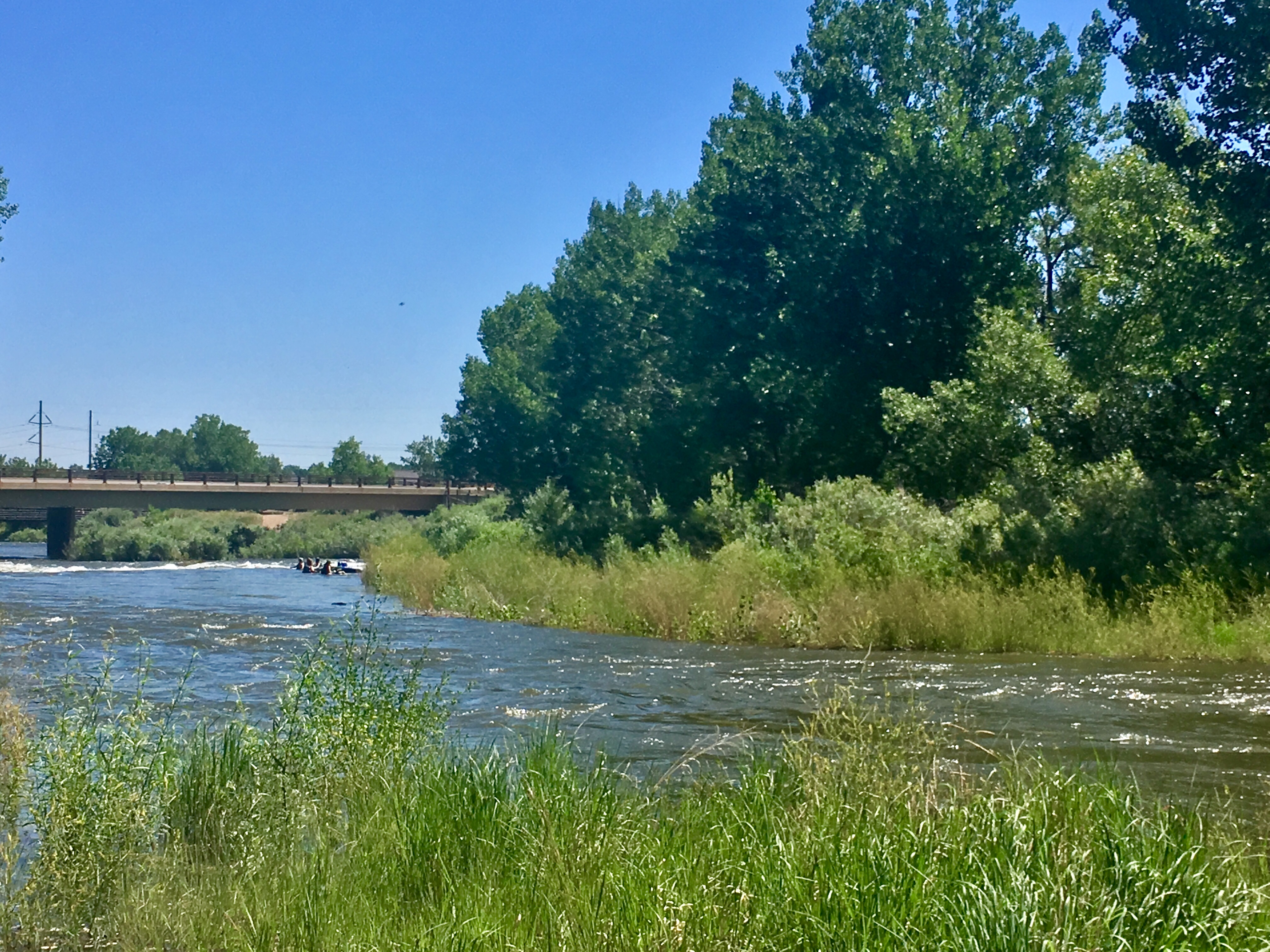
Visit South Platte River Park in Littleton, Colorado (a suburb a few miles south of Denver) on a summer weekend and you’ll likely see dozens of people paddling, wading, fishing, or tubing on the river. A few weeks ago I was one of those tubers enjoying higher than normal flows on the South Platte, thanks to the high snowpack this past winter. As we floated on riffles and gentle rapids, families of ducks grazed at the river’s edge and trout swam beneath us. Occasionally we got caught on someone’s fishing line or bumped tubes in crowded sections of the river.
The South Platte was not always a busy recreational playground, for decades it was dismissed by many residents as an open sewer. Thankfully, over the past several years state and local governments and conservation organizations like the Greenway Foundation and Denver Trout Unlimited have invested significant resources in revitalizing this urban river. Though water quality has improved, there are still high levels of E-coli in certain sections of the river, which makes it unsafe for swimming. Excess nutrients like nitrogen and phosphorus that can contribute to toxic algae outbreaks are also a concern. Run-off from fertilized lawns, discharges from wastewater treatment plants north and south of Denver, and other sources all contribute nutrients to the river.
Concerns over excess nutrients compelled the Greenway Foundation, several wastewater utilities, and other stakeholders to challenge a March 2018 determination by the Colorado Department of Public Health and Environment (CDPHE) that Denver Water must add orthophosphate to its drinking water treatment by March 2020. Orthophosphate is a chemical commonly used by water utilities to create a protective coating on service lines and plumbing to reduce the corrosion that causes lead releases. Currently, Denver Water treats for lead by adjusting pH, which can also reduce the corrosivity of service lines and household plumbing and fixtures. In the three decades Denver Water has been required to monitor lead levels, it has only once exceeded the Safe Drinking Water Act Action Level for lead, which is reached when more than 10% of samples are 15 parts per billion (ppb) or higher. In 2012 Denver Water reported a 90th percentile level of 17 ppb.
When a drinking water utility exceeds the 15 ppb Action Level for lead it must take action to address the issue and in some cases, adjust treatment. The state ordered Denver Water to add orthophosphate because it can be more effective at reducing lead exposure than just adjusting pH, but its use can also threaten water quality in nearby rivers, streams, and lakes by increasing phosphorus levels that can harm fish, wildlife, and recreational users. And once orthophosphate treatment begins, it is difficult to stop without triggering additional lead releases. Wastewater utilities can remove phosphorus, but upgrades to treatment are costly and currently available treatment options can cause other water quality challenges, especially from chloride and total dissolved salts.
Over the past year, all concerned parties agreed to put litigation on hold and instead have been working together to find a solution to significantly reduce the public health risk of lead exposure, while also protecting the water quality of our region’s streams, rivers, and lakes. As an alternative to adding orthophosphate, Denver Water has proposed a bold, multi-faceted plan that tackles the largest source of lead to its water customers, the lead service lines. If carried out successfully, Denver Water’s plan would achieve greater reductions in the risk to public exposure to lead than adding orthophosphate. It would also avoid contributing additional phosphorus to the South Platte and other streams and lakes in the region.
Key elements of Denver Water’s Lead Reduction Program include:
-
A full inventory of lead service lines that will be shared with the public in an online map;
-
An accelerated service line replacement program to remove all known lead service lines (an estimated 75,000) at no cost to homeowners within 15 years;
-
Distributing free filters to all homes with a known, suspected, or possible lead service line to reduce their exposure to lead by 97% or more while they wait to have their service line replaced;
-
Increasing pH levels to reduce corrosion of service lines and household plumbing and fixtures;
-
A robust communication, outreach, and education program to help its customers understand ways to reduce their exposure to lead.
Denver Water will also identify communities most vulnerable to lead exposure, typically families with young children, schools, and daycare centers, in order to prioritize removing those communities’ lead service lines first.
The most effective way to limit exposure to lead is to remove the lead at the source. For lead in drinking water, that means focusing on digging up and replacing lead service lines that are some of the greatest contributors to lead in drinking water. Clean Water Action is working to promote full lead service line replacement in local, state, and national projects. We applaud Denver Water’s ambitious proposal to eliminate one of the largest sources of lead in its distribution system while protecting public health as that task is accomplished. Protecting all of our communities from lead must be a top priority, and it is also critical to continue making progress toward reducing nutrient pollution in our rivers, streams, and lakes.
There are hurdles Denver Water must go through before acting on its ambitious plan, including securing approval from the Environmental Protection Agency (EPA) and CDPHE. Community input and engagement will be critical to the success of this plan.



